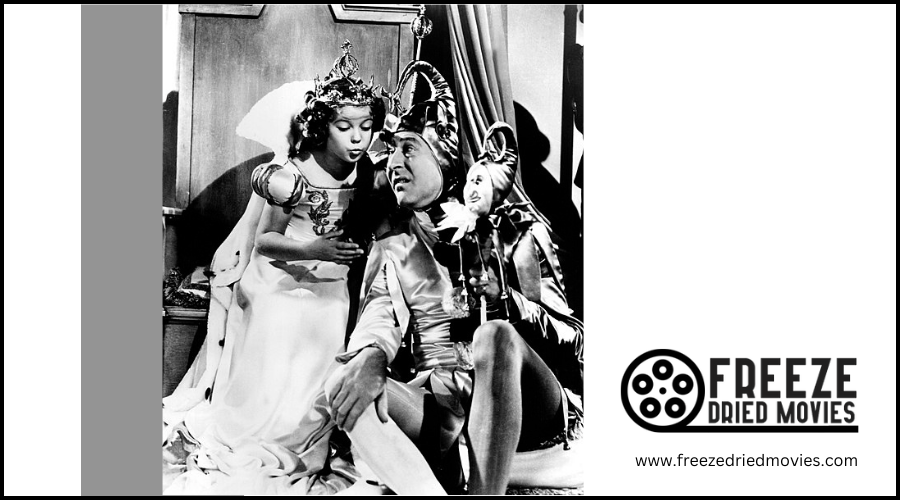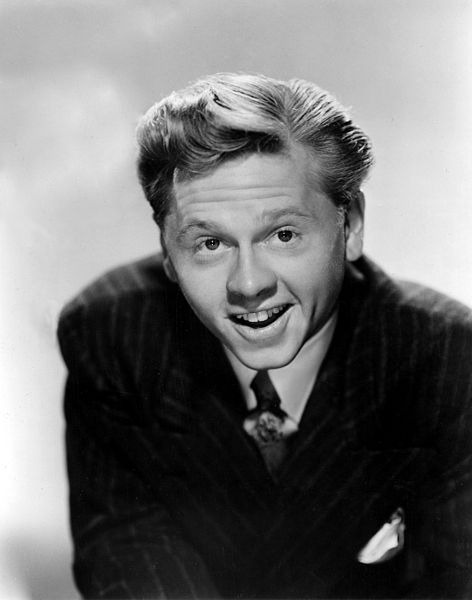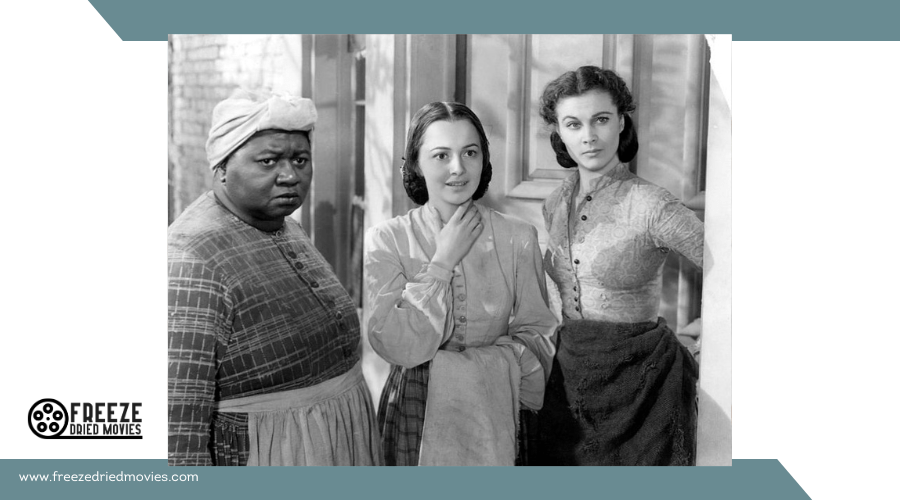Exploring the Legacy of 1930s Child Stars

Exploring the legacy of 1930s child stars reveals a blend of glamour and hardship that continues to resonate today. Icons like Shirley Temple, Judy Garland, and Mickey Rooney not only entertained but also transformed Hollywood's approach to child actors and marketing. Their stories highlight the allure of early fame alongside significant personal and mental health struggles. What lessons can we learn from their experiences, and how do they continue to shape our understanding of childhood in media? There's much more to uncover.
Rise to Fame
The rise to fame for child stars in the 1930s was nothing short of meteoric. Shirley Temple began her film career at the age of three. By five, she was already a box-office champion, with films like "The Little Colonel" (1935) solidifying her superstar status. Her charm and talent made her the face of innocence during the Great Depression, enchanting audiences and boosting Hollywood's spirits and coffers.
Judy Garland's ascent to stardom peaked with her role as Dorothy in "The Wizard of Oz" (1939). Her performance, especially her iconic rendition of "Over the Rainbow," earned her a special Juvenile Academy Award in 1940, showcasing her extraordinary talent. Meanwhile, Mickey Rooney gained recognition through "A Family Affair" (1937) and the Andy Hardy series, where his versatility and charm made him a household name.

Jane Withers, another notable child star, gained fame alongside Shirley Temple in "Bright Eyes" (1934). She went on to star in nearly 50 B-level films under a contract with 20th Century-Fox. Collectively, these child stars not only shaped Hollywood's marketing strategies but also generated millions in merchandise sales, addressing themes of innocence and childhood during tough economic times.
Personal Lives
Now, let's explore the personal lives of these child stars and the impact of fame on them. Judy Garland faced tumultuous relationships and substance abuse issues that severely affected her mental health. Mickey Rooney experienced a series of challenges, including eight marriages and legal troubles. In contrast, Jane Withers and Shirley Temple navigated their transitions to adulthood in distinct ways, each encountering unique challenges and successes.
Marriages and Relationships
Navigating the complexities of personal relationships, child stars of the 1930s often faced intense public scrutiny, significantly impacting their well-being. Judy Garland's marriages to Vincente Minnelli, Sidney Luft, and Mickey Deans were marked by instability, reflecting her struggles to find personal peace amid the pressures of fame. Her relationships, compounded by battles with substance abuse, highlighted the difficulties child stars encountered.
Mickey Rooney's life was similarly fraught, with eight marriages, including a notable union with Ava Gardner. His later years were marred by legal battles, filing elder abuse and fraud charges against his stepson and wife, underscoring the difficulties in maintaining personal stability. Rooney's advocacy for elder abuse awareness further emphasized the lasting impact of his tumultuous relationships.
In contrast, Jane Withers managed her personal life with more stability. After an initial marriage ended in the early 1940s, she found lasting happiness in her second marriage in 1955. Successfully transitioning to television, she became a prominent pitchwoman, illustrating a less tumultuous side of 1930s child stars' personal lives. These varied experiences reveal the profound impact relationships had on their lives and careers.
Mental Health Struggles
Navigating the turbulent waters of personal relationships, child stars of the 1930s faced considerable mental health challenges that compounded their struggles. Judy Garland, one of the most famous child stars, is a poignant example. She grappled with mental health issues, including postnatal depression, exacerbated by the pressures of fame. These pressures led to multiple suicide attempts and her untimely death at 47. Her tumultuous relationships and battles with addiction highlight the personal toll that fame can take.
Mickey Rooney, another renowned child actor, faced emotional challenges throughout his life. Legal battles related to elder abuse and fraud underscored the enduring struggles that many child stars face as they mature. These issues reflect broader mental health struggles among child actors, where transitioning into adulthood often involves considerable difficulties related to identity and public scrutiny.
Shirley Temple, whose early success pressured her to maintain a pristine image, brought increased scrutiny to the mental health of child stars. Her experience prompted significant discussions about the welfare and rights of young actors in the industry. Collectively, the mental health struggles of these stars serve as cautionary tales, revealing the hidden, often heartbreaking, challenges of life in Hollywood.

Substance Abuse Issues
Substance abuse issues significantly impacted the personal lives and careers of many child stars of the 1930s. Judy Garland, one of the era's most iconic figures, struggled with substance abuse throughout her life. The relentless pressures of Hollywood and the industry's troubling practice of supplying prescription drugs contributed to her addiction. Garland faced multiple suicide attempts and tragically died from an overdose at the age of 47.
Mickey Rooney also battled addiction, which was compounded by his tumultuous personal life, including eight marriages. Despite these challenges, Rooney later became an advocate for elder abuse awareness, demonstrating his commitment to turning his painful experiences into positive action.
Both Garland and Rooney's stories underscore the significant mental health pressures faced by child stars due to the intense scrutiny and expectations placed upon them. Their struggles have sparked ongoing discussions about the mental health and well-being of young actors in Hollywood.
Their experiences serve as cautionary tales about the dark side of fame and highlight the crucial need for mental health support in the entertainment industry.
Mental Health Struggles
The intense pressures and relentless scrutiny of Hollywood's golden age left an indelible mark on the mental health of its child stars. Judy Garland's struggles are a prime example, as she battled postnatal depression and substance abuse. The constant pressure to adhere to her star persona led to multiple suicide attempts and, ultimately, her tragic death at 47 from an overdose.
Mickey Rooney's later life was marred by legal battles over elder abuse and fraud, underscoring how childhood fame can lead to long-term mental health challenges. Similarly, Shirley Temple's early success brought immense pressure to maintain her public image, sparking significant discussions about child labor laws and mental well-being.
Transitioning from childhood to adulthood in the entertainment industry presents its own set of difficulties. Many former child stars face identity crises and ongoing mental health struggles exacerbated by unyielding scrutiny and expectations.
Organizations like A Minor Consideration have been established to address these issues, advocating for better mental health support and protections for former child actors. By raising awareness and creating support systems, they aim to mitigate the lasting impact of early fame on mental health.
Hollywood Impact
Hollywood's golden age of the 1930s was profoundly shaped by its child stars, whose influence extended well beyond mere entertainment. These young talents redefined the industry, with Shirley Temple leading the charge. From 1935 to 1938, she was a box office phenomenon, eclipsing many adult stars and generating substantial revenue for 20th Century Fox, aiding the studio's recovery during the Great Depression.
Judy Garland's portrayal of Dorothy in "The Wizard of Oz" (1939) revolutionized the musical genre, demonstrating the significant impact child actors could have in Hollywood's Golden Age. Her performance proved that young actors could handle complex and influential roles. Similarly, Mickey Rooney's 13 films in the Andy Hardy series set a new standard for family-friendly entertainment.
The influence of these child actors extended beyond the screen:
- Revenue Generation: Shirley Temple's films brought in significant box office returns.
- Cultural Impact: Garland's "Wizard of Oz" set a new benchmark for musicals.
- Merchandising: Temple's dolls and records created a lucrative market.
Their success prompted Hollywood to rethink marketing strategies and underscored the need for better regulations and labor laws to protect young performers.
Enduring Legacy
The enduring legacy of 1930s child stars is evident in their lasting cultural influence. Shirley Temple provided hope during the Great Depression, while Mickey Rooney successfully transitioned into adult roles. These pioneers shaped the evolution of child stardom, and their impact can be seen in how young performers are treated and celebrated in modern media.
Cultural Influence and Impact

Emerging from a period marked by economic hardship, the child stars of the 1930s left an indelible mark on both cinema and society. Icons like Mickey Rooney and Judy Garland became cultural touchstones, influencing generations. Judy Garland's role as Dorothy in "The Wizard of Oz" showcased the emotional depth child actors could achieve, making her a cultural icon and shaping the future of musical cinema. Likewise, Mickey Rooney's career, particularly through the Andy Hardy series, demonstrated the potential for child stars to evolve into versatile actors, paving the way for future generations.
Shirley Temple's films, filled with optimism during the Great Depression, provided much-needed escapism and hope. Her portrayals set a standard for future child actors in how childhood was depicted on screen. This cultural impact extended beyond the screen, influencing societal perceptions of childhood and resilience.
The legacy of these stars also led to significant changes in Hollywood, including increased scrutiny and advocacy for the rights and well-being of child performers. Their influence is still felt today in discussions about childhood, fame, and the pressures young actors face.
Key impacts include:
- Raising emotional depth in child acting.
- Setting industry standards for child performers.
- Influencing child labor laws in Hollywood.
Evolution of Child Stardom
The evolution of child stardom has profoundly shaped the entertainment industry since the 1930s. Shirley Temple, who became a box-office sensation at just five years old, pioneered the archetype of the child actor. During that era, the protective studio system shielded child stars from much of the media scrutiny and public pressure that modern child actors face.
Today, intense public and media expectations can lead to significant challenges for young stars, making it difficult to maintain their mental health and professional stability. The legacy of 1930s stars like Judy Garland and Mickey Rooney illustrates this duality, showcasing both their immense success and the personal struggles often accompanying their fame.
Merchandising and marketing strategies born from the early successes of these child actors have left a lasting impact, altering how youth is portrayed in film. However, contemporary child stars often struggle with transitioning to adult roles, reflecting an evolution in industry practices and audience expectations. This ongoing shift contrasts with the more stable, albeit still challenging, experiences of their 1930s counterparts.
Legacy in Modern Media
In today's media landscape, the legacy of 1930s child stars like Shirley Temple and Judy Garland remains evident. Their films and performances continue to captivate audiences and are often celebrated in retrospectives and tributes. Shirley Temple's pioneering role as a child star set a precedent for the marketing of child actors and established merchandising strategies still prevalent in contemporary Hollywood.
Judy Garland's portrayal of Dorothy in "The Wizard of Oz" has become a cultural touchstone. Her rendition of "Over the Rainbow" resonates across various mediums, including film, television, and stage adaptations. These iconic moments serve as enduring symbols of Hollywood's golden era, influencing modern media in numerous ways.

Additionally, the struggles faced by these child stars have sparked significant discussions about the treatment and rights of child performers today, leading to industry reforms aimed at protecting young talent. The nostalgic portrayal of childhood innocence by these stars contrasts with the darker themes often explored in contemporary entertainment, highlighting a shift in cultural expectations.
Here are three ways their legacy influences modern media:
- Marketing and Merchandising Strategies
- Cultural Touchstones in Performances
- Reforms in Child Performer Rights
Cultural Significance
During the 1930s, child stars like Shirley Temple and Judy Garland significantly shaped the cultural landscape. These young performers embodied ideals of innocence and optimism, providing an escape from the Great Depression's harsh realities. Shirley Temple's charm and talent not only generated substantial revenue for Hollywood but also pioneered a new market for child-centric products like dolls and records, influencing merchandising strategies that persist today.
Judy Garland's iconic performance in "The Wizard of Oz" showcased the emotional depth of childhood. Her portrayal of Dorothy became a cultural touchstone, symbolizing resilience and hope, and solidified her status as an enduring figure in American cinema.
The success of these child stars brought attention to the treatment of young performers, leading to increased advocacy for child actor welfare and changes in child labor laws. Their idealized portrayals of youth set societal expectations, contrasting with the more nuanced narratives seen in contemporary media. The cultural significance of these 1930s child stars remains influential, shaping industry practices and societal norms.




